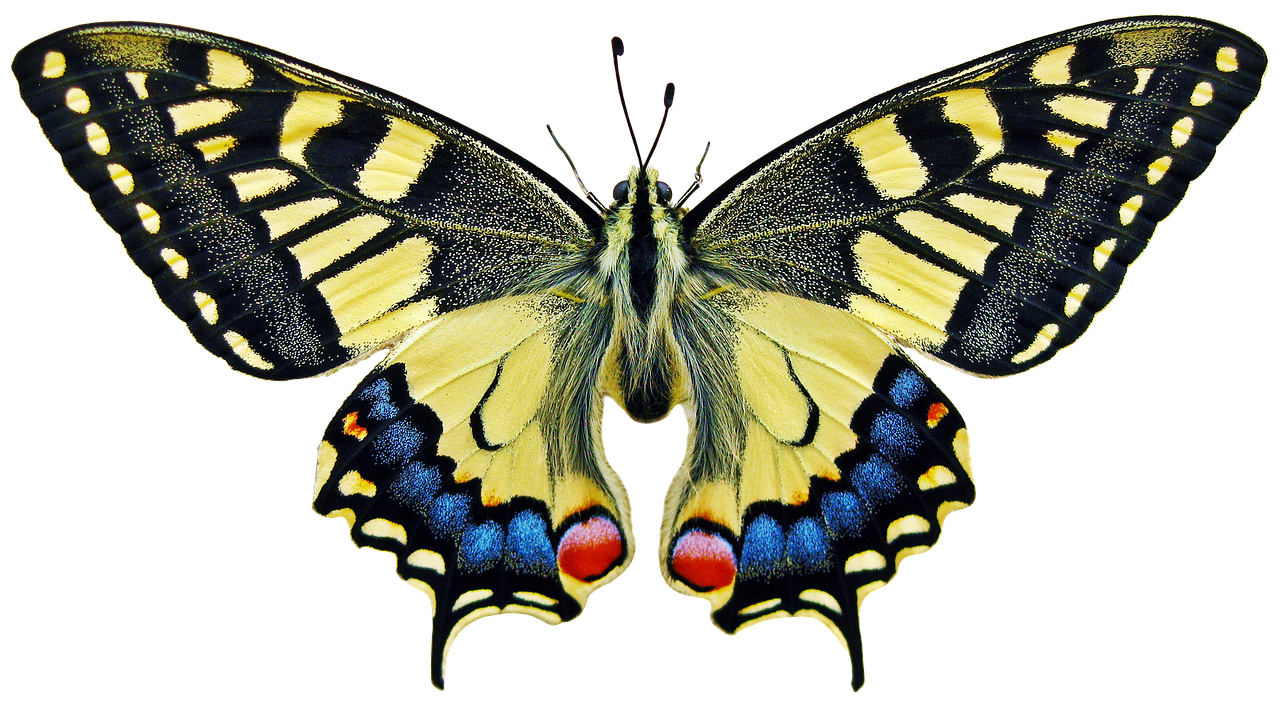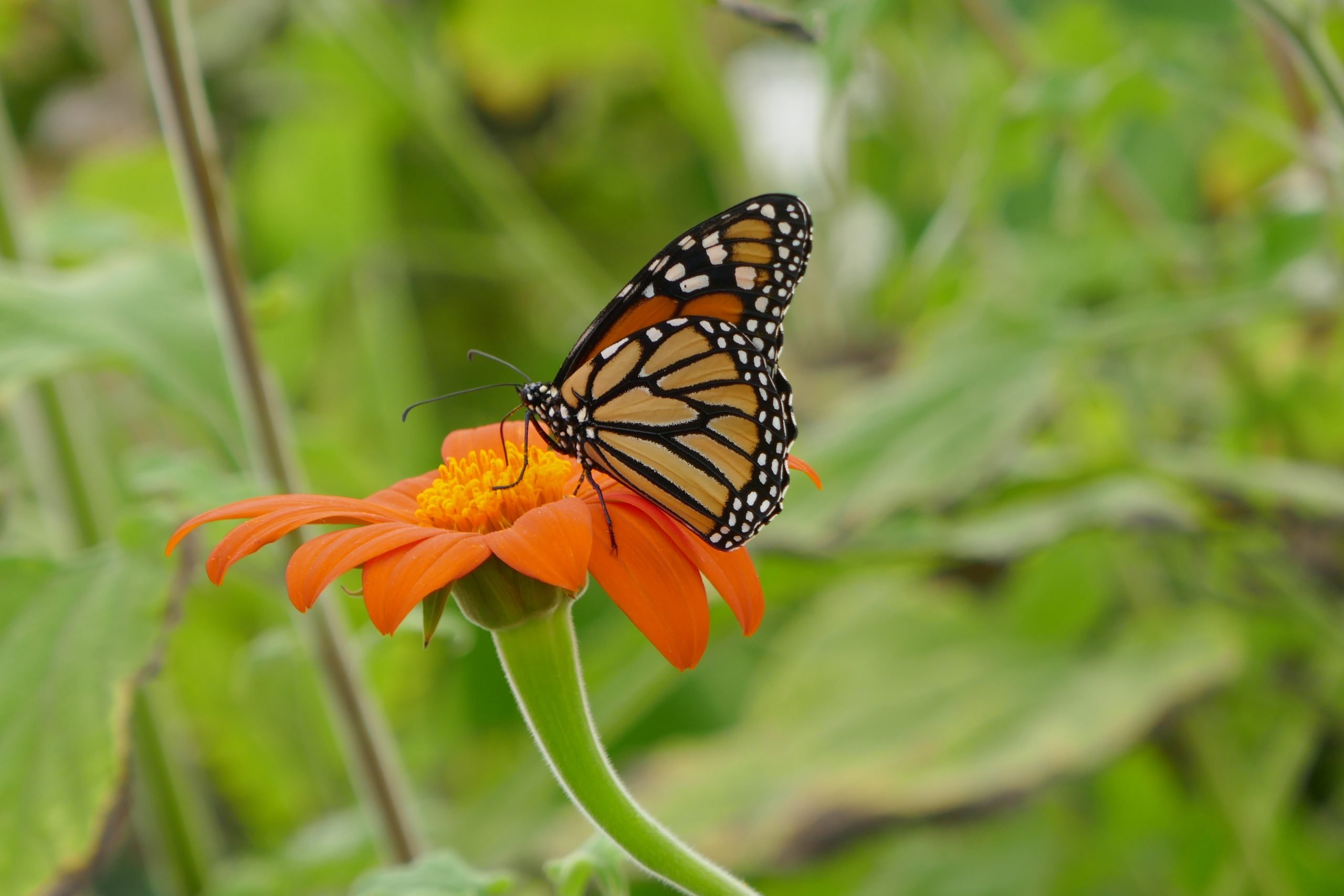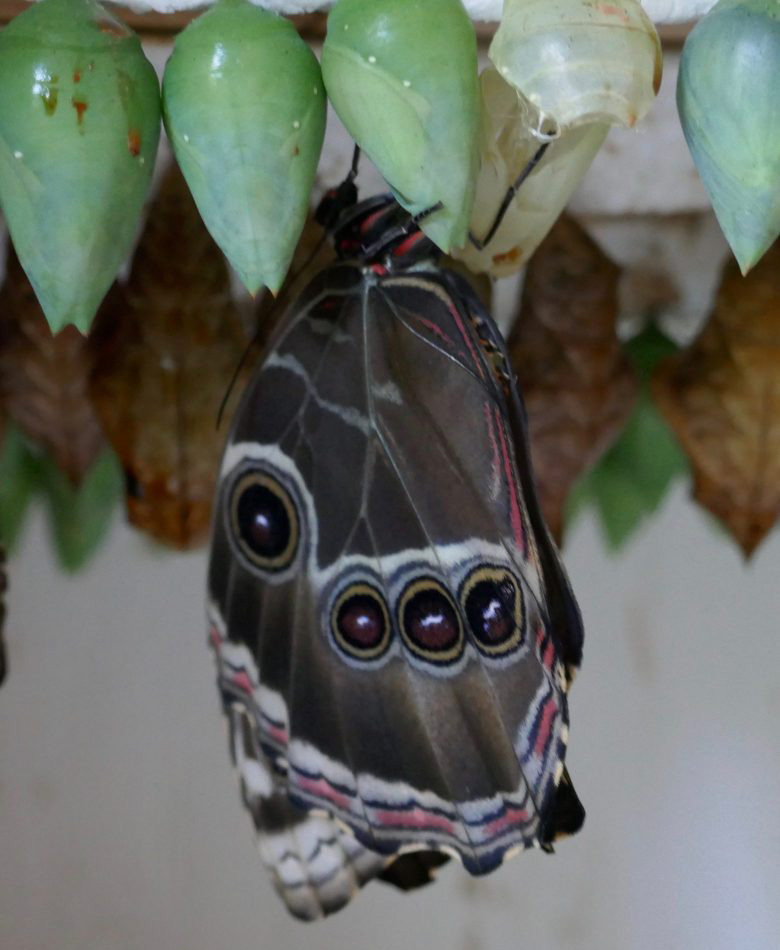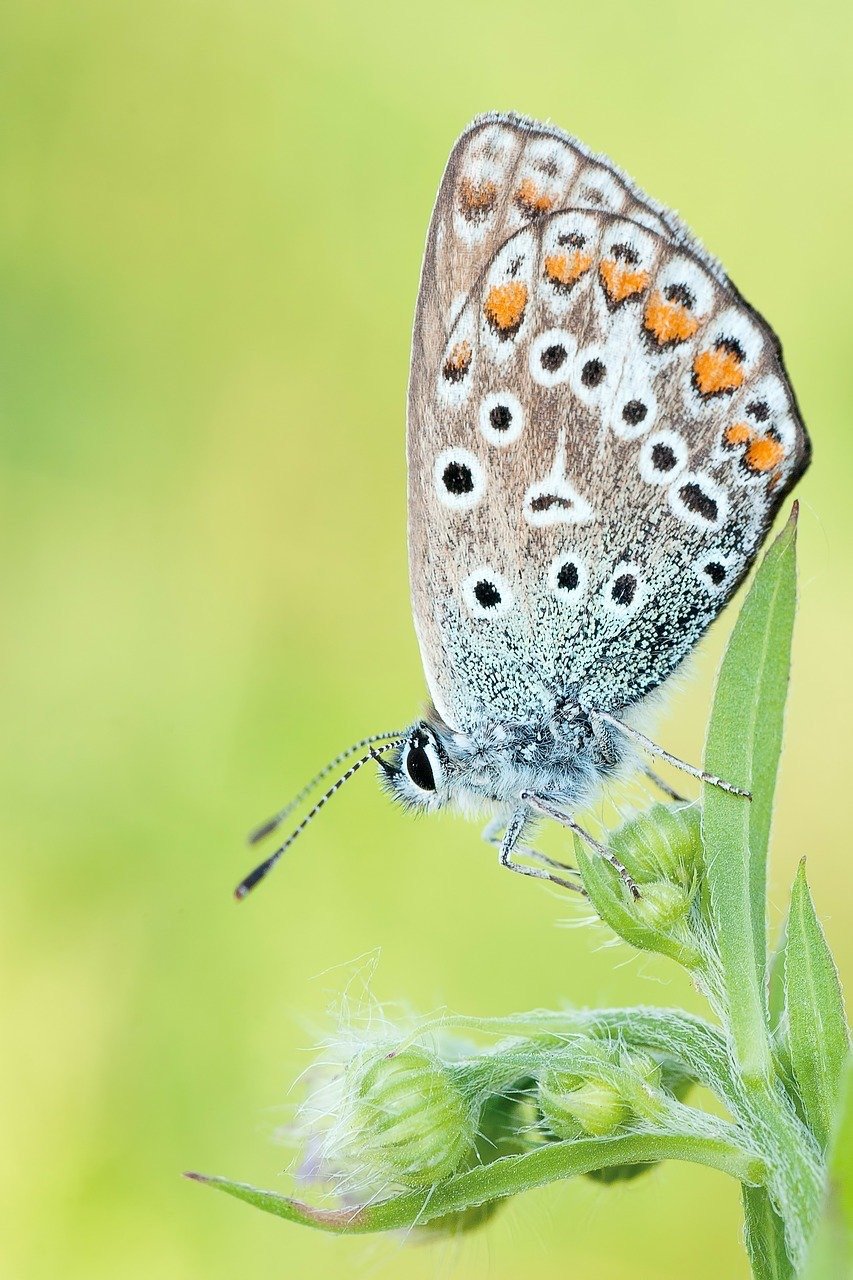Butterflies
Butterflies

There are over 20,000 species of butterfly.
The amazing butterfly. There are so many butterfly facts, it is hard to know where to begin. But here we go.
Out of the 20,000 species of butterflies in the world, only 750 live in North America. And since butterflies can’t fly when temperatures drop below 55F degrees, they don’t live in places like Antarctica where it stays cold year round.
So what happens when it gets really cold? Well, some butterflies like the monarch migrate to warmer places such as Mexico for the winter. Other butterflies hibernate in leaves while some perish if it gets too cold. One lucky monarch, back in 2012, was lucky enough to be transported from New York to San Antonio on Southwest Airlines by a passionate butterfly advocate. Read the amazing story here.
What Is Metamorphosis?

Butterflies lay their eggs on host plants
Let’s look at some other interesting butterfly facts. All butterflies, which are insects, start out as caterpillars but not all caterpillars turn into butterflies. Hmmm. Sounds like a riddle.
So what caterpillars don’t turn into butterflies? The ones that turn into moths which is a whole different topic. But every butterfly caterpillar goes through several stages, called metamorphosis, in becoming a butterfly. Wow, this feels confusing!
Let’s start at the beginning. A female butterfly mates with a male and lays her eggs on a plant.

This is often on a specific plant (called a host plant) that will provide food for the egg when it hatches.
And what are some host plants for specific butterflies? The zebra swallowtail will only lay its eggs on a pawpaw tree while the spicebush swallowtail needs either a spicebush or sassafrass plant on which to lay its eggs.

We always feel joy when we see a monarch butterfly
Eggs can hatch in as quickly as a few days (or months or even years, depending on the type of butterfly) into a caterpillar, also called a larva.

Then the caterpillar then begins to eat, and eat, its host plant, shedding its skin several times as it grows.

The last time it sheds its skin, it suspends itself in a sheltered place with some silken threads and forms a hard oval-like case called a pupa or chrysalis.

Several days (or weeks or years) later a fully winged butterfly emerges from the pupa and the cycle begins anew. Pretty cool.
Other Cool Butterfly Facts

How many lenses does a butterfly eye have? Over 6,000 but who counted all those?
How fast do they fly? Butterflies have been clocked as fast as 12 miles an hour and as high as 11,000 feet.
They taste with their feet, all 6 of them (you normally only see 4 legs since the front 2 are curled up under the butterfly).
The longest daily flight recorded by a butterfly is 265 miles, helped most likely by strong winds.
A group of butterflies is a flutter and a group congregating in a muddy place is called puddling.
How many lenses does a butterfly have in each eye? 6,000! Ok, so who counted them and how?
Butterflies do not like to fly at night as they might be eaten by a bat or predator bird. Sounds like a good strategy.
A person that studies butterflies is a called a lepidopterist. Try pronouncing that one!
Butterflies As Pollinators
Butterflies help pollinate many wildflowers as they move from flower to flower. After bees, they are one of the most beneficial pollinators. And they can travel farther than most bees, pollinating a larger area of plants.
And if you are curious about what other animals are pollinators, check out our blog Amazing Pollinators in the Garden. You might be surprized to learn lizards are just one of the cool pollinators helping our plants.

Should You Raise Commercial Butterflies To Release Into The Wild?

No, no and no! Please don’t do it, even though you may be trying to help wild butterflies. Unless you are part of an organized conservation effort to rebuild wild populations of specific butterflies, raising or releasing butterflies into the wild can do way more damage than good.
And while butterflies are often released at weddings, funerals, by schools as classroom projects, it can hurt the very insects we want to protect.
The Xerces Society recommends if teachers want to use butterflies or caterpillars for educational purposes, use ones locally netted or reared. And as an option instead of releasing them into the wild, have students learn about and care for them through their entire life cycle.
Disease from the raised butterflies can be spread to the wild population.
The butterflies released can die quickly from lack of the right nectar sources or adverse weather conditions.
It confuses scientific studies of butterfly migrations and can confuse wild butterflies as they fly by.
Butterflies are now being poached from the wild for profit.
Butterflies raised in California don’t know how to migrate when released in say, North Carolina.
It is illegal to release any wildlife into the wild in some states.
Read more here.
Butterflies Are In Trouble. How Can You Help?

You can help by:
Plant native flowering plants including bushes, wildflowers, grasses & trees.
For monarchs, plant native milkweed which is the only plant on which a monarch will lay its eggs.
Avoid the use of pesticides in your garden or yard as they can kill both caterpillars & butterflies.
Provide water and cover along with nectar.
Become a citizen scientist and report your sightings of butterflies. It is loads of fun and very rewarding. We signed up for Journey North to report our monarch butterfly sightings. It is easy & free & helps scientists learn more about their behavior.
To learn more butterfly facts and help protect them, join organizations that help protect butterflies. We are lifetime members of The Xerces Society which helps conserve insects like butterflies.
